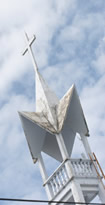![]()
![]()
![]()
About Lembeh Straits
Diving in Lembeh - What You Will See

About Lembeh Straits
We've done Lembeh Straits 5 times, and it's still my favourite place to dive.
Lembeh is actually an island across from the town of Bitung, which is on the eastern side of the northern tip of Sulawesi. The Lembeh Straits (or Selat Lembeh) refers to the body of water in between Lembeh island, and the mainland.
A little geography lesson: Sulawesi is the gnarled-looking piece of land to the east of Borneo. Its funny contorted shape is believed to have been caused by plate tectonic movements (go do a Google search - very interesting stuff).
Back to Lembeh. A talking point is the volcanic sand beneath the water. This means that when you dive, you are will often see stretches of black sand. And because volcanic sand has got its own rich and unique qualities, the marine life there is pretty rich and unique.
You must have read in diving literature that Lembeh Straits is a muck diving haven. If you haven't been muck diving before, you might get the impression that it involves swimming in really dirty muddy water with lots of rubbish and mutated sea creatures living underneath tin cans and potato chip packets, and a sandy taste in your regulator.
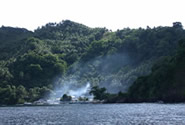

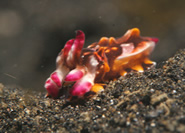
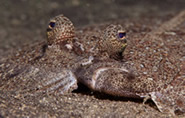
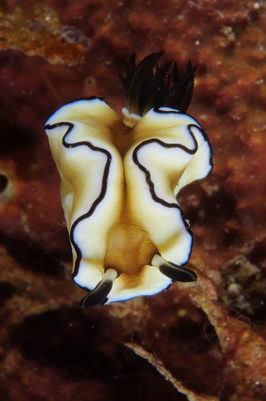

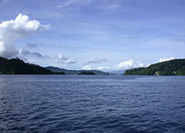
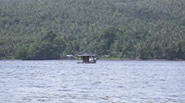
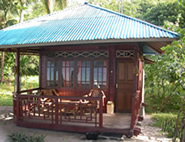
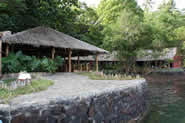
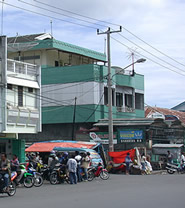
But in truth, muck diving in Lembeh means acceptable visibility even in low season, pretty clean water, a HUGE variety of marine life, and from a girl's perspective - many pretty things. And it's not all black sand and muck diving (which is mainly on the Bitung side, kind of between Jahir and Aw Shucks). On the Lembeh island side, northwards from Pantai Perigi, the coral reefs are quite healthy.
May-Nov are the high season months for diving, but because the Lembeh Straits are sheltered from the monsoon rains, it's diveable all year round. We once went in mid-January, which is supposed to be rainy season, but we got more sunshine (and a sunburn) than rain. Low season also means strong breezes which meant our wetsuits and swimsuits dried in record time in between dives. There were a few passing showers, but these were mostly in the form of light rain, over in minutes because the strong wind blew all the clouds away. One night there was heavy rain but not a thunderstorm. Average water temperature was about 27 degrees centigrade.
Visibility in low season ranges from about 5-10m.
Low or high season, we saw enough to take up 10GB of photos.
Would I go again in low season? Definitely yes.
When we went in July, high season, it was supposed to be sunny weather but it rained every day we were there, except for one day. Water temperature was about 24 degrees centigrade. I wore 3 layers plus a hood. Another time we went at the end of March, and the sun was blazing most of the time, with the water a lovely 29 degrees centigrade. This could be the exception rather than the norm though, and my advice is to stay in a place which has hot water showers. Just in case.
From what I know, there are 11 places to stay in Lembeh Straits - Black Sand Dive Retreat, SDQ Lembeh, Kungkungan Bay Resort, Lembeh Resort, Divers Lodge Lembeh, Bastianos Lembeh, TwoFish Divers, Kasawari Resort, Nomad Adventure Divers, Makawidey Resort and Lembeh Hills. Many of them opened within the last 3-4 years. If you do your research over the internet, all offer good dive packages including airport transfers, all meals, and about 3 dives a day. What varies is the standard of accommodation, depending on your budget. For just over US$100 a day at Nomad Adventure Divers, your dive package will include an air-conditioned room with hot water. For about US$200 a day at Black Sand, and about US$260 a day at Lembeh Resort, you get the classy-resort stay plus Nitrox. For a little less (US$95 a day at SDQ Lembeh), your dive package will include a room with no airconditioning or hot water, but nonetheless a cozy experience. All four are featured in these webpages.
Places like Kungkungan Bay Resort (KBR) and Lembeh Resort are more atas and therefore charge a little more. At KBR some of the female guests don heels for dinner, so don't say I didn't warn you.
Our holiday at Lembeh Resort in May 2009 cost US$3,754 in total for 2 people, including 7 nights accommodation, Nitrox, 21 dives (including 1 shore dive and 4 night dives), 3 meals a day + snacks, and airport transfers. Price excludes tips and airfare.
Our holiday at Black Sand Dive Retreat in March 2009 cost US$1,616 in total for 2 people, including 4 nights accommodation, Nitrox, 9 dives (including 2 shore dives and 1 night dive), 1 hired torch, 3 meals a day + snacks, and airport transfers. The price excluded tips and airfare.
Our holiday at Nomad Adventure Divers in March 2007 cost US$1,340 in total for 2 people, including 5 nights accommodation, 4 days of diving or 16 dives (3 dives + 1 night dive a day), Nitrox, 1 hired torch for all night dives, 3 meals a day, and airport transfers. This price excluded tips and airfare.
Our holiday at SDQ Lembeh in January 2006 cost US$1,178 in total for 2 people including 5 nights accommodation, 4 days of diving or 15 dives (3 dives a day + 1 night dive for 3 days), hired torch for 3 night dives, 3 meals a day, and airport transfers. This price excluded tips and airfare.
Currency, Language and Culture
Currency is the Indonesian Rupiah. As locals would have trouble changing American currency, especially for certain series, it's best to tip them in Indonesian Rupiah. You should be able to change dollars at your resort.
The official language is Bahasa Indonesia, but I suspect the locals at SDQ mixed their Bahasa with their own dialects. I don't think there is a problem walking around in a string bikini at Lembeh, but it would probably be safer to 'dress normally' (decently) in the villages and built-up areas.
One thing that will strike you when you're on the mainland, is that there is a church on every street corner. The local radio station plays Christian songs. That should give you an idea of their culture and what to expect. Local staff in the resorts are often Christian, cook and eat pork, sing gospel songs, and are friends with the free-roaming dogs kept in some of the resorts.

